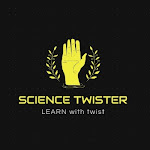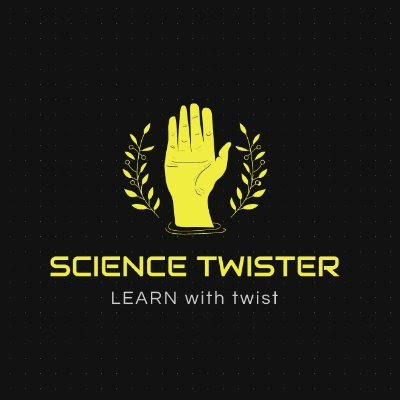HOW DO ORGANISMS REPRODUCE
Reproduction is the process by which all living organisms produce offspring similar to their parents.
Question:- Why there is need for reproduction?
Reproduction is essential to maintain the ecological balance and the food chain by maintaining population of species and the continuity of species.
There are two modes of reproduction :-
1. BUDDING:
- In this type of asexual mode of reproduction an outgrowth occur in the parent organisms.
- This outgrowth later become parent organisms and detaches away from their parent plants.
- The outgrowth happen due to repeated cell division at a specific site.
- Examples are Hydra, Yeast etc.
2.] FISSION :
- There are two types of Fission.
a). Binary Fission - In this mode of reproduction parents organisms get divided into two new individual organisms.
Examples are Amoeba ( Irregular Binary Fission), Paramecium ( Transverse Binary Fission ), Leishmania ( Longitudinal Binary Fission).
b).Multiple Fission - The mode of reproduction in which parent organisms splits or divides into many offsprings are called multiple fission.
Examples are Plasmodium
# FACTS:- Under unfavourable conditions Amoeba also develop a strong outside covering called cyst. It protects the Amoeba under such condition.
3]. SPORE FORMATION :
- In spore formation, the parents plants produces hundreds of microscopic reproductive units called spores.
- These spores remain covered until they got a favourable climatic conditions.
- Under favourable climatic conditions spores get bursts and grow as a new parent organisms.
- Examples are Rhizopus.
Question:- Differentiate between REGENERATION and FRAGMENTATION?
Ans:- Following are the differences between Regeneration and Fragmentation---
Regeneration :-
- It is the growth of a lost limb or parts of the body.
- All organisms show some characteristics of regeneration.
- No new organisms are born/ produce.
- Examples are lost tail of lizard.
Fragmentation:-
- It is the growth of the new organisms from each part of fragments.
- Very few ( rarely) organisms show fragmentation reproduction.
- New organisms/individual are grown.
- Examples are Sea-anemone, Spirogyra etc.
4]. VEGETATIVE PROPAGATION:-
It is the method through asexual reproduction carried out by the vegetative parts of a plants(either it is a leaf, roots or stem). There are 6 natural way and 3 artificial way.
NATURAL METHOD:-
- With Tuber. Ex :-Potato
- With Leaf . Ex:- Bryophyllum
- With Rhizome Ex:- Ginger
- With Stolon Ex:- Strawberry
- With Bulb Ex:- Onion
- With Sucker Ex:- Banana
ARTIFICIAL METHOD:-
1]. Cutting:-
- Such type of plant are grown from a stem.
- In this process stem of a plants are cut down. Then the 'cut' part of the plant( stem ) is planted.
- These plants grown out as a single plants.
- Examples are Rose, Banana, Grapes, etc.
2]. GRAFTING:-
- Such type of plants are grown from joining the two parts of two different plants.
- First part is known as scion which is without roots.
- Second part is known as stock which contains roots and sown in the ground.
- These method are applied to get the both characteristics of plants.
- Examples are Apple, Mango, etc.
3]. Layering:-
- Such type of method in which a branch/stem of the plant is pulled towards the ground and covered with the soil is called Layering.
- Examples are Jasmine, Guava, etc.
ADVANTAGES OF ARTIFICIAL VEGETATIVE PROPAGATION:-
- Plants grown with this method are almost same and uniform.
- Seedless plants are grown easily.
- These plants need less attention.
- Most of them just grow with a single plant.
- These plants bear fruits much earlier.
SEXUAL REPRODUCTION IN FLOWERS :-
following are the various parts of flowers:-
A]. STAMEN [ Anther + Filament]
- It is the male reproductive organs of the plants.
- Stalk of stamen is known as filament.
- Swollen top of stamen is known as anther.
- Anther produces and store pollen grains.
- Pollen grains appear to be yellow, and powder like substances.
B]. CARPEL [Stigma + Style + Ovary ]
- It is the female reproductive organs of the plants.
- Stigma is so sticky, so it is used for receveing the pollen grains from anther.
- Style is a tube which connects the ovary with stigma.
- Ovary is the swollen part which produces and stores egg (ovule).
C]. SEPALS:-
- It is the green coloured parts of the flower.
- It protects the flower( bud ), during its initial stages.
- Group of Sepals is known as "Calyx".
D]. PETALS:-
- It is the colourful parts of a flower.
- It helps in attraction of pollinating agents like butterfly, honey, etc which helps in pollination.
- Group of Petals is known as "Corolla".
E]. RECEPTACLE:-
- It is the end part of a flower, to which a flower remains attached.
Define Pollination:- The transfer of pollen grains from anther to stigma is known as pollination.
There are few pollinating agent:-
a]. Insects ( Entomophily ).
b]. Bats ( Chiropterophily).
c]. Wind ( Anemophily ).
d]. Water ( Hydrophily ).
How fertilization occur in flower ?
- After pollination, when pollen grains land on the tip of stigma, the pollen tube emerges and each pollen tube starts moving towards ovary.
- The pollen tube which reaches the ovary first get fused with egg.
- The pollen tube contains pollen grains( male gametes), which fuses with the ovule(female gametes) present in the ovary.
- After fertilization, the zygote divides itself repeatedly to form Embryo.
- The ovule develops a tough coat and forms seed, while ovary grows rapidly and forms fruit.
- The other parts of the flower get shrivel off, and the new seed is ready for sowing.
Double fertilisation:- During fertilization in flower, one male gametes fuses with ovule while other male gametes fuses with polar nuclei to form endosperms. This process is known as double fertilization.
Triple fusion:- The process of fertilization of polar nuclei with male gametes to form endosperms is known as Triple fusion.
Parthenocarpy:- The process of growing a plant without seed is known as Parthenocarpy. In such plants, fruit develop without any fertilisation.
MALE REPRODUCTIVE SYSTEM:-
Following are the human male reproductive system:-
A]. Testes :-
- It is the ovoid like structure present inside scrotum.
- There are two testes present in scrotum.
- It's function is to secrete testosterone (secondary sexual characterstics hormone ).
- It also helps in the production of sperms.
B]. Vas Deferens:-
- It is a tube like structure that carry sperms from epididymis to the Urethra.
- It is also known as sperm duct.
C]. Scrotum:-
- Sac like structure that store sperms inside it.
- It hangs outside the body in front of the pelvis.
- It hangs outside the body because, for production of sperm, 2-3 temperature less.
D]. URETHRA:-
- It is the common passage of both sperms and urine.
E] PROSTATE GLAND and SEMINAL VESICLE:-
- Secretion from these gland secretes helps in providing fluidity and nutrition to the sperms.
- Sperms along with these secretions are called Semen.
F].PENIS:-
- It is the external male reproductive organs
- It is responsible for passage of urine as well as sperms, outside the body.
- Penis contains a dense network of blood vessels and erectile tissue.
- It becomes erect due to arousal of intense flow of blood.
G]. EPIDIDYMIS:-
- It stores the mature sperms until it is ejaculated out of the body.
- Ejaculation is the act of expelling sperms outside the body.
FEMALE REPRODUCTIVE SYSTEM:-
Following are the human male reproductive system:-
A]. Ovaries:-
- It is homologous to testes( in males) and present on both side of the lower abdomen.
- It produce and store ovum.
- It also secrete secondary sexual characteristics hormone: progestrone and oestrogen.
B]. Fallopian Tube:-
- It helps in the transfer of ova ( egg) from ovaries to the uterus.
- It is a pair of muscular tube, funnel shaped structure, attached to upper part of the uterus.
- The end of the fallopian tube have finger like projections called fimbriae.
- Fimbriae helps in the collection of "ova".
- It is the site of fertilization (Ampulla).
C]. Uterus:-
- It is a hollow, inverted, pear shaped muscular organs.
- It is also known as womb.
- It has 3 wall layers.
- It houses the developing foetus.
- The exchange of nutrients and wastes between mother and foetus took place here with the help of a particular tissue called Placenta.
D]. CERVIX and VAGINA:-
- The lower portion of the uterus is called cervix and it opens its mouth in the vagina.
- An opening in the cervix allows for the passage of sperms into the uterus and exit of menstrual cycle.
- The same opening dilates during pregnancy to allow passage of foetus.
- Vagina is a muscular and elastic tube that receives Penis during sexual intercourse.
- It is also known as 'birth canal'.
MENSATRUAL CYCLE:-
The breakdown and removal of the inner,thick,soft lining of the blood vessels in the form of vaginal bleeding is called menstruation. And this process is called menstrual cycle.
It occurs in 4 phases:-
- Menstrual Phase ( 4-5 days)
- Follicular Phase ( lasts for 10 days)
- Ovulatory Phase ( occurs in the 13th or 14th day)
- Luteal Phase ( 15th to 28th days)
Fertilization in Human reproductive parts:-
- The process of fusion of sperms and ovum is known as fertilization.
- They fuse together to form zygote.
- Fertilization can only occur when both sperm and ovum simultaneously reach the fallopian tube.
- If the zygote gets implanted in the uterus,pregnancy is established.
PREGNANCY:-
- After pregnancy is established,the fertilized egg(zygote) starts dividing an form embryo and later-on foetus.
- The uterus prepares itself to receive and nurture the growing embryo.
- The embryo gets planted in uterus and receives the necessary items with the help of Placenta.
- The average duration of a human pregnancy is about 9 months or 40 weeks.
- This period is known as Gestation period.
- Vigorous contraction of the muscles of the uterus at the end of pregnancy cause expulsion of the foetus called Parturition.
REPRODUCTIVE HEALTH:-
According to World Health Organisation(WHO), health is a state of complete physical,mental and social well-being of a people, and not merely the absence of any disease, in all matters relating to the reproductive system and to its function and processes.
SEXUALLY TRANSMITTED DISEASE:-
Those disease which spread from an infected person to an infected person, when they come in sexual contact.
Following are the few STD's:-
- Gonorrhoea (Neisseria Gonorrhoeae Bacterium)
- Syphilis ( Treponema Pallidum)
- Warts ( Human Papilloma Virus)
- Acquired Immunodeficiency Disease [AIDS] (Human Immunodeficiency Virus).
CONTRACEPTION:-
- It is the avoidance pregnancy, can be achieved by the fertilization of ova.
- There are few methods of Contraception:-
- Physical Barrier
- To prevent union of egg.
- usage of condoms and cervical caps can prevent pregnancy.
- Chemical Method
- usage of oral pills.
- This change the hormonal balance of body.
- It may have side effects.
- Intra-Uterine Contraceptive Device
- Cooper-T or loop is placed in the uterus to prevent pregnancy.
- Surgical Methods
- In Male - The vas deferens is blocked. It is known as vasectomy.
- In Female - The fallopian tube is blocked. It is known as tubectomy.



